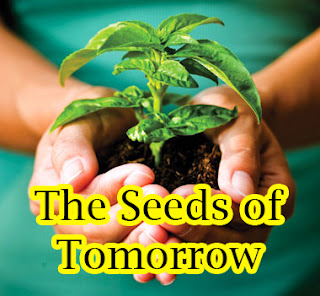By Zahra Nasir
The Dawn
This being the time of year for getting to serious grips with your intended ‘winter through to spring’ flower display, let’s take a look at what you can start off from seed, what is on offer in the nurseries and how to make the most of whatever garden or balcony space you happen to have.
First off is the relatively low-cost method of growing all of your bedding and pot plants from seed. With seed suppliers having expanded the range of seeds they have on offer, do not hold back in experimenting with varieties which are new to you as, let’s face it, most seeds are not terribly expensive. Having said this, there are always exceptions and these are often new varieties which, on top of the sometimes astronomical prices, have very few seeds per packet. A point to ponder here: If you save seed from hybrid plants the results are always disappointing but, if you grow heritage seeds, you can collect your own free supply, on and on, over the years to come with no deterioration in plant quality at all.
Flower seeds to look out for and to sow now, include all kinds of petunias — but do remember that the ‘old-fashioned’, single varieties are easier to grow, are more tolerant of adverse weather conditions and flower for much longer than the fancy hybrid ones which, while beautiful, can be temperamental. Those wonderful antirrhinums, in all of their multi-coloured or single-hued glory, are another ‘must have’, from dwarf varieties to those which tower four to five feet tall and which bees, honey bees or otherwise, absolutely adore. Then there are Sweet Williams, salvias, cinerarias, carnations, gerbera, geraniums, hollyhocks, calendulas, scabosia, rudbekia, phlox, stocks, begonias, pansies, violas and a whole lot more.
Many of the aforementioned flowers will be available, pot-grown, from your local nurseries now or during the weeks to come and, while these can seem to be a good buy, please note the following: Seedlings need to be transplanted out into their growing position, or into individual pots or other containers, when they are small, usually at the four-to-six-leaf stage. All seedlings need space to grow and nursery-grown pots of seedlings are often very overcrowded.
This means that, if they are past the crucial four-to-six-leaf stage when purchased, the plants are often, as a result of fighting for space, too weak to take the shock of transplanting. Losses will, therefore be extremely high — especially with tall growing varieties — unless, of course, you simply leave them, overcrowded as they are, right there in the pot to give a mass display of low quality plants in a small space. If you wait until nursery-grown, seasonal plants are in full flower before making your selection then please do not even attempt to transplant them, simply enjoy them as they are, make a note of the variety and buy them earlier next time around.
If you have an established garden, massed with greenery in the shape of trees and purely ornamental shrubs, it may not be feasible to plant flower seedlings, the majority of which need sunlight (lots of it) directly in the ground but, of course, there are always ways around this. Identify the sunny spots; these may even be above the ground rather than on it, and fill these with lots of brightly coloured flowers in pots, in wooden crates, in all manner of ‘plantable’ recycled objects — the more interesting the better — and indulge your imagination in an array of hanging baskets which can be purpose-made or improvised. Suspend these from tree branches, from sticking out pipes, from anything else offering itself up for use or erect some kind of a strong framework that will take the weight of hanging baskets — these are surprisingly heavy when full and when wet — without it collapsing in a heap!
Balconies and verandas make perfect ‘mass display’ areas for seasonal flowers too: A single line of potted, seasonal plants is a simple way of going about creating colourful beauty to enjoy but, it is easy to double, triple, even quadruple the effect. Simply arrange pots in and on things such as vegetable racks, recycled shelving and shelving units, on tables and anything else that comes to hand and which will, naturally, take the weight of however many pots/containers/wooden vegetable or fruit crates that you decide to use for this purpose.
A decent basic soil mix for all of the above is 40pc sweet earth, 40pc old, well rotted, organic manure/organic compost and 20pc river sand (not salty sea sand). Finally, do remember to ensure that drainage is good as very few plants will tolerate waterlogged growing conditions.

No comments:
Post a Comment